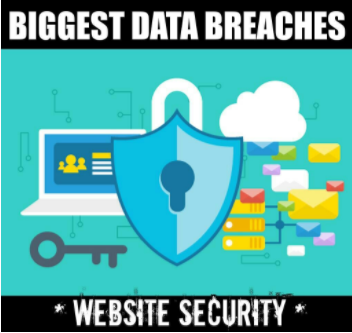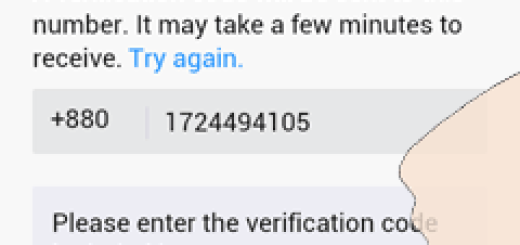Three of the Biggest Website Security Blunders of All Time
Over the years, many individuals and organizations have fallen victims to identity theft, fraud, and other security blunders. Data breaches and identity theft have since become a huge problem in the world today because of the increasing demand for businesses to build their online presence. However, some of the largest companies in the U.S. have been targeted by hackers and unfortunately have had their security compromised. These data breaches took most everyone by surprise and devastatingly impacted both their customers and companies.
 Hackers are constantly on the lookout for new opportunities to prove their skills. Data breaches happen so often that it’s sometimes difficult to keep track of all of them. The hackers steal valuable customer information such as names, account numbers, credit card information, social security numbers, mailing addresses, driver’s license numbers etc., and their victims are left looking over their shoulders for the rest of their lives knowing that they will always be at risk of having their identity misused by identity thieves. 30,000 websites a day are hacked. Here are some of the biggest security blunders.
Hackers are constantly on the lookout for new opportunities to prove their skills. Data breaches happen so often that it’s sometimes difficult to keep track of all of them. The hackers steal valuable customer information such as names, account numbers, credit card information, social security numbers, mailing addresses, driver’s license numbers etc., and their victims are left looking over their shoulders for the rest of their lives knowing that they will always be at risk of having their identity misused by identity thieves. 30,000 websites a day are hacked. Here are some of the biggest security blunders.
2011 Sony PlayStation Network Hack
The Sony PlayStation Network is one of the world’s largest online gaming communities. It connects owners of the PlayStation gaming consoles to each other. Unfortunately, the PlayStation network was hacked between April 17 and April 19, 2011 and the personal details of 77 million users were stolen from one of Sony’s database, making it the largest data security breaches at that time. This prevented all users of PlayStation devices from accessing the service as Sony shut down access to the PlayStation network on April 20 and the outage lasted for about 23 days.
The outage was estimated to have cost Sony $171 million and numerous law suits followed costing the company even more money. The hackers had stolen names, addresses, email addresses and birth dates and Sony said it was unclear whether credit card data was stolen.
Equifax Hack
This is the latest extensive data breach and it is said to have affected about 143 million Americans, almost half the country’s population. The data breach occurred on July 29th 2017 and the hackers stole Social Security numbers from Equifax. With your Social Security number and your name, almost anyone can impersonate you. The credit card data of 209,000 consumers were also exposed, causing havoc with banks and individuals.
Yahoo Hack
Yahoo, founded in 1994, was one of the most valuable websites in the world for a time. The company was targeted by a group of hackers and about 500 million accounts were compromised. Ranging from names, to dates of birth, email addresses, and passwords, a lot of valuable information were stolen by these intruders. The hack began with a simple phishing e-mail sent to some Yahoo employees who had certain privileged access.
All the employees did was click on a malicious link in the e-mail, and it gave the intruders direct access to Yahoo’s internal networks and database. It was later revealed that Russian spies had hired the Hackers to hack into Yahoo Servers and one of the names that keeps popping up in my search is Alexsey Belan, who was already on the FBI’s Most Wanted Hackers list.
What To Do After A Data Breach
If you are unfortunate enough to be listed as a victim of a data breach and your personal information gets stolen from an organization’s database, it may seem like the end of the world. But trust me, it isn’t. Here are a couple of things you can do to protect yourself and minimize the damage:
- The first thing to do as a victim is to determine what was stolen. You’ll need to narrow down exactly what kind of information was lost and taken as a result of the breach.
- The next thing to do is to change all your online passwords if you can, including the affected accounts.
- Contact the affected institutions. If it’s your credit card information that was stolen, ask the card issuer to alert you if suspicious activity is detected, or simply block the card from making further transactions and request a new one straight away.
- Sign up for an identity-monitoring service.
- Contact the major consumer credit-reporting bureaus and ask each to place a fraud alert on your name.
If you’re a website owner, don’t be the next company on our list. Contact Trust Guard. They will monitor the security of your website and provide you with a security trust seal that will significantly increase your current conversion rate. That’s because when people visiting your website see that your website is safe, they will want to buy from you.
 This article was written by Emmanuel Ozigi, a biochemist in the making from Nigeria. In my spare time, I’m a science, health, and fitness blogger. I also specialize in graphic design and photo editing. I also have this insatiable hunger for information and the desire to learn new things. Visit my blog at http://sciencehealth24.com.
This article was written by Emmanuel Ozigi, a biochemist in the making from Nigeria. In my spare time, I’m a science, health, and fitness blogger. I also specialize in graphic design and photo editing. I also have this insatiable hunger for information and the desire to learn new things. Visit my blog at http://sciencehealth24.com.



